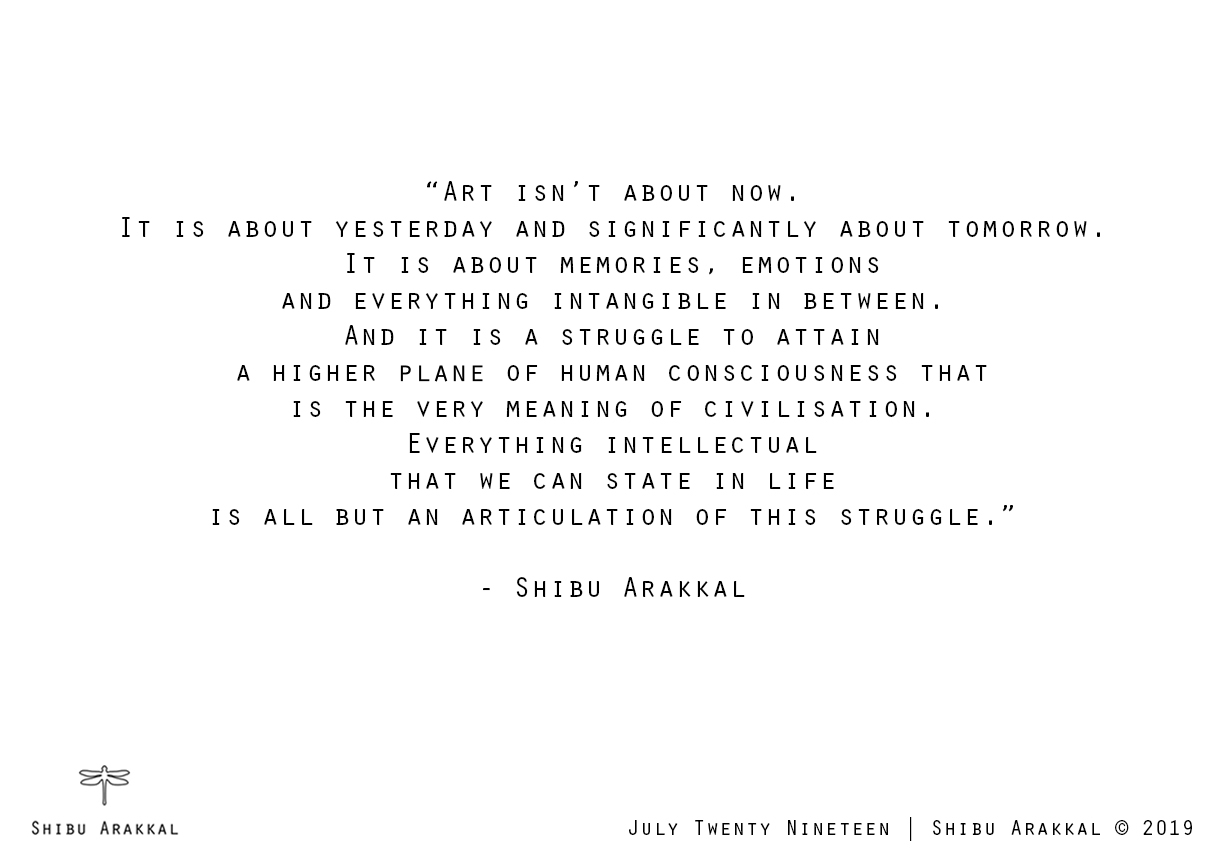
As we resumed Conversation Saturdays with its second edition on this 3rd of May, we started it off with the topic that has lingered on in my mind about uniqueness in art (any form of it), especially in this day, where the lines between art and design, philosophy etc. seem to have blurred, almost indistinguishably.
I use the word ‘uniqueness’ rather than ‘originality’ as in art, the latter is a highly contentious one.
The invitees for CS2 were Bangalore-based blues band By2Blues, consisting of Ananth Menon, Vasudev Prabhu and Joe Anthony and visual artists from CS1, Aarohi Singh and Clyde D’Mello.
 Aarohi Singh | Artist | Bangalore
Aarohi Singh | Artist | Bangalore
Aarohi began with a comment on how there is a style of art these days that the art world is keen to embrace, even if there might not be that mass yet subjective consensus on that kind of art being articulate enough, whether in technique or concept to be able to truly connect, even with its intended audience.
We hit on this statement, apparently uttered by a well-known art professional in India that everything is art. And if that were true, my argument was that everything could be anything. Everything could be music, everything could be philosophy and everything could be design. I also think that this lack of clarity and decisiveness doesn’t do much for the consumers of any style of art and not in the least to the practicers, particularly in ascribing a context to their own work.
 Vasudev Prabhu | Musician | Bangalore
Vasudev Prabhu | Musician | Bangalore
Vasudev Prabhu (Dev to us) made the wholly agreeable point that regardless of inspiration, it is the honesty or sincerity of the creative effort that distinguishes a piece of work, especially in the work’s own context. Also as there is no work bereft of inspiration, hence also the usage of the word uniqueness as opposed to originality. No work of art, I think, can stand alone and certainly not stand the test of time if its starting point is where someone else’s work left off.
To further this point, Joe stated the case of a brilliant Carnatic vocalist by the name of Madhav Gudi, a disciple of the great Bhimsen Joshi and someone who had studied under the maestro for a period of twenty six years. Only to be able to sing identically like his guru and as it seems, not having distinguished himself from the uniqueness that made Bhimsen Joshi renowned.
 Clyde D’Mello | Artist | Bangalore
Clyde D’Mello | Artist | Bangalore
Bringing the conversation back to the visual realm, Clyde’s mention of a very significant chapter of the great Francis Bacon’s career was very humbling. An artist whose work I have followed but not having been aware that Bacon was in his first exposition critiqued as being a derivative of Picasso. As the story goes, it led to the very angry Bacon spending every penny he earned, becoming nearly bankrupt. At which point (of not having anything), Bacon came out with work that we all have grown to love him for.
I feel it pertinent to also state that Picasso himself was the world’s most successful plagiarist, having stolen his seminal idea of cubism from George Braque. My dad used to say, “When Picasso was born, a hundred artists died”.
During a later chat on the matter with my good friend and artist Jitha Karthikeyan, she stated the need for artists to have wisdom. To be able to judge your own work in its rightful context, regardless of anyone’s opinion and for realisations like what Bacon experienced to be attained more routinely and not necessarily by hitting rock bottom.
Distilling our final thoughts, I can safely say that art of any form, created for time and not for a market, will have the basic ingredients of honesty, integrity, pride, wisdom, uniqueness and technical proficiency or skill. And the wisdom to know that uniqueness is always golden.
June Twenty Seventeen


